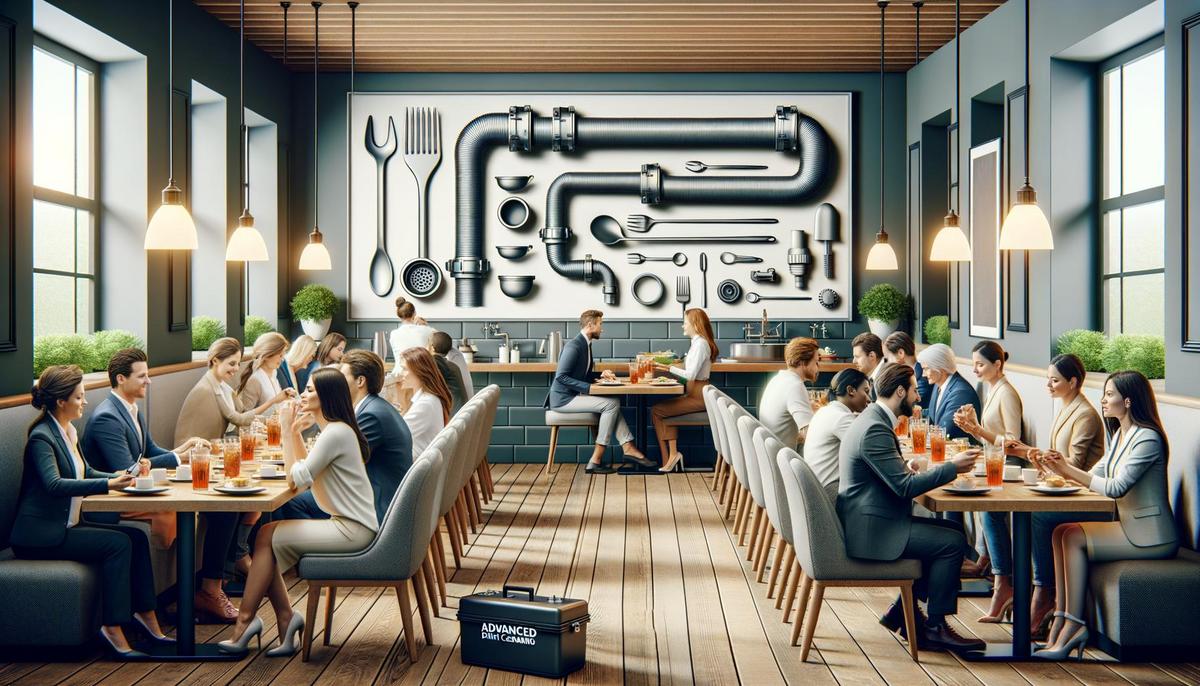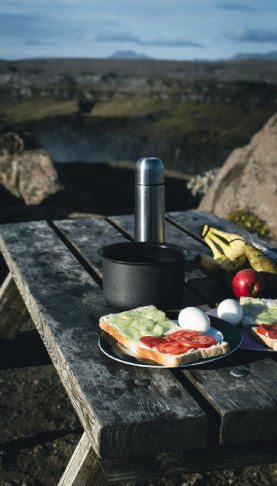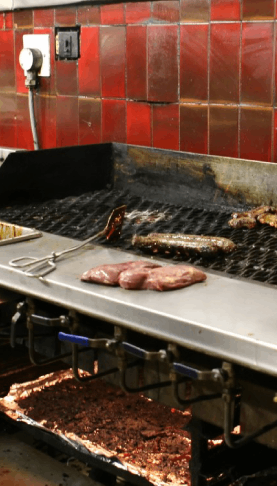You keep your restaurant running by treating drains like part of the line: schedule routine cleaning, pump the grease trap on time, train staff on what not to toss in the sink, and have a 24/7 partner on call. If you are in Chelmsford MA, that partner can be Advanced Drain Cleaning Inc. That is the whole play. Nothing fancy. Prevent clogs, fix problems fast, and keep records so you do not repeat mistakes.
Why kitchen drains decide whether service flies or stalls
Every busy kitchen pushes a lot of fat, starch, and scraps through the plumbing. During prep it is a trickle. During dinner it can be heavy. When lines slow, everything else slows. Tickets wait. Dishes pile. Smells creep in. I have watched a Friday night turn from steady to chaotic because one floor drain burped up near the dish area. Not dramatic, just annoying enough to drag service.
Think of drains like ovens or fridges. You would not run a dinner shift with a warm walk-in. The same logic applies here. You cannot see the lines, which makes them easy to forget, but the risks are real:
- Prep delays when sinks drain slow
- Health code trouble from standing water and odors
- Staff safety risks near slick floors
- Food waste handling issues during backups
- Guest experience hits when restroom drains act up
One clogged line at 6:45 pm is not a plumbing problem. It is a service problem.
What actually clogs a commercial kitchen drain
Most blockages in restaurants come from a small set of repeat offenders. You know them. But a quick list helps staff training. It also helps you pick the right fix.
The usual suspects
- Grease and oil from fryers and sauté stations that cool and harden
- Starch from pasta, rice, potatoes that turns to glue in pipes
- Stringy vegetables that snag on rough pipe walls
- Coffee grounds and fine particles that settle into sludge
- Paper towels or wipes in restrooms that do not break down fast
- Dish soaps that move grease but do not remove it from the system
You might think hot water fixes grease. It helps for a moment. Then it cools downstream and sticks harder. I learned that the boring way, standing next to a three-compartment sink with a pot of boiling water and not much patience. It felt helpful. It was not.
Early warnings before a full blockage
- Gurgling sounds after heavy use
- Slow sinks even when strainers look clean
- Fruit flies showing up near floor drains
- Persistent odors you cannot place
- Backups that clear, then return the next day
Small warnings are like soft tickets. Handle them now, or they stack up when you are busiest.
A simple maintenance plan that kitchens actually follow
If a plan is too complex, it will not last. I prefer short checklists, clear roles, and dates on a calendar. Also, a phone number on the wall for when things go sideways. Not every day needs a full cleaning. A little routine goes a long way.
Daily, weekly, monthly cadence
| When | Task | Who | Notes |
|---|---|---|---|
| Daily close | Clean sink strainers and wipe floor drain grates | Dish team | Bag food solids, never push them through the grate |
| Daily close | Hot water flush of main prep sinks for 2 to 3 minutes | Line lead | Do not use boiling water in PVC lines |
| 2x per week | Enzyme or bacteria dosing as directed | Manager | Pick a product that matches your pipe and trap setup |
| Weekly | Grease trap inspection and skimming if needed | BOH manager | Log date, estimated inches of grease, odors |
| Monthly | Camera check and line cleaning for problem areas | Vendor | Short visit if issues repeat in the same zone |
| Quarterly | Full hydro jet service on main kitchen line | Vendor | Pair with grease trap pumping |
Staff habits that keep drains clear
- Scrape plates and pans into bins before rinsing
- Use sink strainers and empty them into trash, not the drain
- Never pour fryer oil into sinks, even a little
- Train on what belongs in restrooms and what does not
- Keep a simple log for slow drains and odors
- Post the service number near the dish area
What goes down your sink is a menu choice. Treat it that way.
Grease trap basics that save money
Grease traps work when sized right and serviced on time. That is it. If your trap is too small for your volume, you will fight backups and smells. If you skip pumping, grease will pass through and coat downstream pipes.
- Right size: match trap capacity to peak hours, not average
- Right schedule: many kitchens need 4 to 8 weeks between pumpings
- Right logs: track odors, visual grease thickness, and pump dates
- Right training: teach staff to keep solids out of the trap
I used to think a bigger trap solved everything. It helps, but if habits do not change, the problem returns. A large dirty trap can be worse than a small clean one.
Methods that actually clear lines
There are a handful of ways to clear drains. The right one depends on the blockage, pipe material, and access. Quick guide below. I will keep it plain.
Snaking
A flexible cable with a cutting head breaks through soft clogs close to the fixture. It is fast and cheap. It can leave grease behind, which means the line may clog again. Good for sinks and short runs.
Drain jetting and hydro jetting
High pressure water cuts grease, removes sludge, and washes out the line. It reaches further and cleans pipe walls. In Chelmsford, many kitchens use drain jetting on a schedule to avoid emergency calls. Hydro jet drain cleaning makes a difference on main lines and floor drains that see heavy prep waste.
Camera inspections
A small camera on a flexible line shows what is in the pipe. Helpful for repeat clogs, old buildings, or mystery smells. Seeing the problem guides the fix. It also gives you proof for a landlord or insurance claim if you need it.
Rooter work for outside lines
Some restaurants sit near trees. Roots can press into joints or seek moisture. A rooter head cuts them, then jetting clears the loose material. Not as common in dense downtown spots, but it happens.
| Method | Best for | Pros | Limits | Typical downtime |
|---|---|---|---|---|
| Snaking | Local sink or short run clogs | Quick, lower cost | May not clear grease on walls | 30 to 60 minutes |
| Hydro jetting | Main kitchen lines, floor drains, recurring grease | Cleans walls, longer relief | Needs water and access, can splash if prep is not done | 1 to 3 hours |
| Camera inspection | Repeat clogs, old or unknown pipes | Finds cause, documents condition | Does not clear by itself | 30 to 90 minutes |
| Rooter cutting | Lines with root intrusion | Removes growth, restores flow | May need follow-up jetting | 1 to 2 hours |
Why restaurants in Chelmsford call Advanced Drain Cleaning Inc
Local matters for this kind of work. When you have a backup at 5:30 pm, you want a crew that knows your streets, parking, and building stock. In Chelmsford MA, kitchen teams often need emergency drain cleaning, drain unblocking, and hydro jetting on short notice. That is where a dedicated outfit with the right tools pays off.
Here is what I have seen from jobs that went smoothly:
- They answer the phone and give a real time window
- They show up with jetting gear, not just a hand snake
- They protect floors and clean up after
- They offer camera footage if the issue repeats
- They do not push chemicals that can hurt pipes
Advanced Drain Cleaning Inc serves Chelmsford with hydro jetting, water jetting services, camera inspections, and routine service plans. That covers most cases. I like that they handle both scheduled work and middle-of-service emergencies. If you need help fast, you need both.
Speed matters. Clean once. Clean right. Get back on the line.
What about pricing
Prices vary with time of day, line length, access, and the severity of the clog. That is normal. A fair baseline helps planning. Your numbers may land higher or lower.
- Simple snaking of a single sink: often under a few hundred dollars
- Hydro jetting a main kitchen run: usually higher, but it cleans better
- Camera inspection: often a flat add-on
- After-hours response: premium for nights and weekends
Hourly rates sound clear, but total scope matters more. A firm that quotes a fixed range after a quick assessment is easier to budget. Ask what is included: setup, cleanup, video, and the first hour of jetting. Transparency beats the lowest sticker price. I think that is a fair way to compare.
What a service call looks like from start to finish
If you have never booked a jetting job, the flow is simple. Knowing the steps keeps the team calm when the sink is rising.
- Call intake. Describe fixtures, smells, recent work, and where water shows up.
- Arrival and assessment. Tech checks access points, trap condition, and risk zones.
- Protection. Mats and plastic around sinks and drains.
- Method choice. Snake for local clogs, jet for greasy mains, camera if unclear.
- Clearing. They run the tool, check flow, and run again if needed.
- Flush and test. Hot water through each fixture, watch for lag.
- Cleanup. Wipe area, pick up debris, remove mats.
- Report. What they found, what they did, and what to change.
Health rules, logs, and peace of mind
Clean drains reduce odors and standing water, which keeps inspectors calm. Good logs help too. Nothing fancy. A clipboard or a simple spreadsheet does the job.
- Track trap pump dates and vendor receipts
- Note slow drains, backups, and odors with dates and times
- Keep camera photos or short videos of problem lines
- Record enzyme dosing days to avoid double dosing
Some teams add this to their HACCP or sanitation checklist. Others keep it with the grease trap file. Either way works if you use it. If you never look at it again, it will not help you argue with a landlord about a shared line or a neighbor who dumps grease at night. Seen that too.
What to do before the drain crew arrives
Small prep work saves time and cuts disruption. You do not need to shut down the kitchen unless water is already on the floor.
- Clear access to sinks, floor drains, and clean-outs
- Pause dish flow for the first 20 to 30 minutes
- Move product and paper goods off the floor nearby
- Tell the host and servers what is happening so they can manage guest flow
- Have one point person for questions, not five
This is one of those cases where five minutes of prep saves thirty minutes of service. Not always, but often.
Aftercare that keeps lines open longer
Once your lines are clear, a few habits stretch the time between services. None of it is complicated.
- Warm water flush at close on heavy-use days
- Daily strainer checks during service and at close
- Use a measured enzyme dose, not a guess
- Train new hires on waste handling during day one
- Do not pour bleach as a fix. It can react with other cleaners.
I go back and forth on enzyme products. Some work well when dosed right. Some feel like a band-aid. If you try one, measure results. Are smells down? Are drains slower or faster by the weekend? Keep what helps.
Seasonal spikes and special events
Holidays and patio season load your system more than you think. Menu changes can do it too. A pasta-heavy special week will test your lines. I have seen that twice. Coincidence, maybe. But I would plan for it.
- Book a jetting a week before big events or holidays
- Empty and inspect the trap before a catering run
- Walk restrooms every hour during rush windows
- Keep spill kits near floor drains
When a clogged drain means something else
Not all backups are grease. A few patterns point to bigger issues. This is where a camera pays off.
- Repeated clogs in different rooms may mean a main line issue
- Backups after rain can point to outside lines or a sump problem
- Gurgling in one fixture when another drains can suggest vent problems
If you rent, document. If you own, plan for a more thorough repair window. You do not have to solve it today. You do need a clear picture of risk and timing.
Local notes for Chelmsford kitchens
Chelmsford MA has a mix of older buildings and newer fit-outs. Some restaurants connect to shared lines with neighbors. That setup changes how you schedule service and how you document. If your neighbor runs a heavy fry program and pumps the trap late, you may feel it. It is not fair, but it happens.
- Ask your landlord for a layout of shared lines
- Keep copies of service reports and photos
- Coordinate early morning service for less disruption
- Consider quarterly hydro jetting on mains if your block sees frequent clogs
Services available in the area include drain cleaning Chelmsford, drain unblocking Chelmsford, hydro jetting Chelmsford, water jetting services Chelmsford, and emergency drain cleaning Chelmsford. If you call a company that does all of these, you avoid the back-and-forth when your first guess is not the right fix.
A quick playbook for a live backup at 6 pm
If you are in the weeds right now, do this. Be calm. It is fixable.
- Stop water flow to the affected sink or drain.
- Move dry goods and product away from the area.
- Call your vendor. Say what you see, smell, and hear.
- Post a runner to redirect dish flow until help arrives.
- Set mats and a wet floor sign. Safety first.
- Keep one person with authority to approve the work.
When in doubt, call early. A 20-minute head start can save a service.
How often should you schedule preventive drain work
There is no single answer. I used to push monthly for everyone. Now I think it depends on menu, volume, and the age of your pipes. Some kitchens run for months without a hiccup if staff habits are strong. Others need monthly jetting because the building is old or the menu leans heavy on starch and fry.
A simple way to find your rhythm:
- Start with quarterly hydro jetting on your main kitchen line
- Track slowdowns and smells in a log
- If you see issues in between, move to every 6 to 8 weeks
- If you see no issues for two quarters, try every 4 to 6 months
Your goal is the smallest spend that avoids emergency calls. That balance shifts with seasons and staff turnover. It is normal to adjust.
Chemicals, DIY, and when to skip both
Over-the-counter drain chemicals seem cheap. They are rough on some pipes and can be unsafe when mixed with kitchen cleaners. They also do not remove the grease layer on pipe walls. So the fix is short, and risk is higher. If you do try a product, read the label and keep staff out of the splash zone. I am not a fan in busy kitchens.
DIY snaking works for small hand sinks. For main lines, a vendor with hydro jet gear does a cleaner job and leaves less mess. And, frankly, you have food to cook.
What I look for in a drain service partner
A good partner makes fewer visits over time because your lines stay clear. That sounds strange from a service company, but the best ones play the long game.
- Clear phone support with fast scheduling
- Jetting gear on the truck, not just a snake
- Camera inspections available on the same visit
- Simple written reports with photos
- Advice that is not just upsells
Advanced Drain Cleaning Inc checks those boxes for many kitchens in Chelmsford. If you want fewer surprises at 6 pm, that matters more than a tiny discount on one visit.
Real-world example from a Friday night
One kitchen I visited had a slow floor drain near the dish area. Nothing terrible. Just slow. They held off calling. By 7:10 pm the drain overflowed, so they shut the dish machine and ran hand-wash mode. That slowed the whole operation. The vendor arrived at 7:50 pm with a jetter, set up in 10 minutes, and cleared a grease slug 20 feet down the line. Service recovered by 8:30 pm. They booked quarterly jetting after that. Was monthly better? Maybe. But quarterly plus better scraping habits did the trick for them.
Common mistakes that keep coming back
- Pouring a little fryer oil into the sink at close to get rid of it
- Skipping the strainer because it slows rinsing
- Waiting for a full backup before calling
- Hiring the cheapest option that only snakes, then clogs return
- Not logging dates, so no one remembers what was done
If you do only one thing from this whole article, set a quarterly reminder for a main-line jetting and pump your trap on schedule. That pair covers most of the recurring headaches.
Q&A
Do I need jetting or snaking?
Use snaking for a local clog at a single sink. Use hydro jetting for main kitchen lines or repeat grease build-up. If you are unsure, ask for a camera check.
Will hydro jetting damage old pipes?
When done by trained techs with the right pressure, hydro jetting is safe for common restaurant pipes. The crew can adjust pressure and choose nozzles for your line. Old or brittle lines deserve a camera look first.
How long does a typical service take?
Most snaking jobs finish within an hour. Hydro jetting main lines takes one to three hours depending on access and build-up. Many kitchens stay open during the work with small adjustments.
Can we keep cooking while a crew is working?
Often yes, with small changes. You might need to pause dish flow or avoid one prep sink. Good crews set mats and manage splash so you can keep moving.
Do enzymes replace professional cleaning?
No. Enzymes help maintain flow between services. They do not remove heavy grease layers. Think of them as a helper, not a fix.
How often should we pump the grease trap?
Many kitchens land between 4 and 8 weeks. Your schedule depends on volume and trap size. Track levels and adjust.
What if the clog is in a shared building line?
Document with photos or camera video and call your landlord. A vendor can clear your section and show where the issue starts. Records help speed decisions.
Who should we call in Chelmsford for emergency service?
If you are in Chelmsford MA and need fast help, call a local team that can handle hydro jetting, camera inspections, and drain unblocking on the same visit. Advanced Drain Cleaning Inc is built for that mix.













